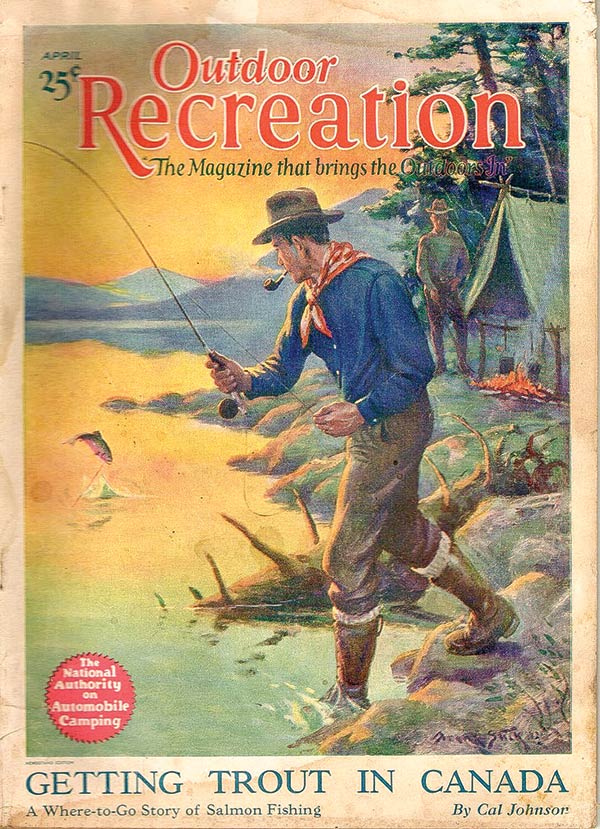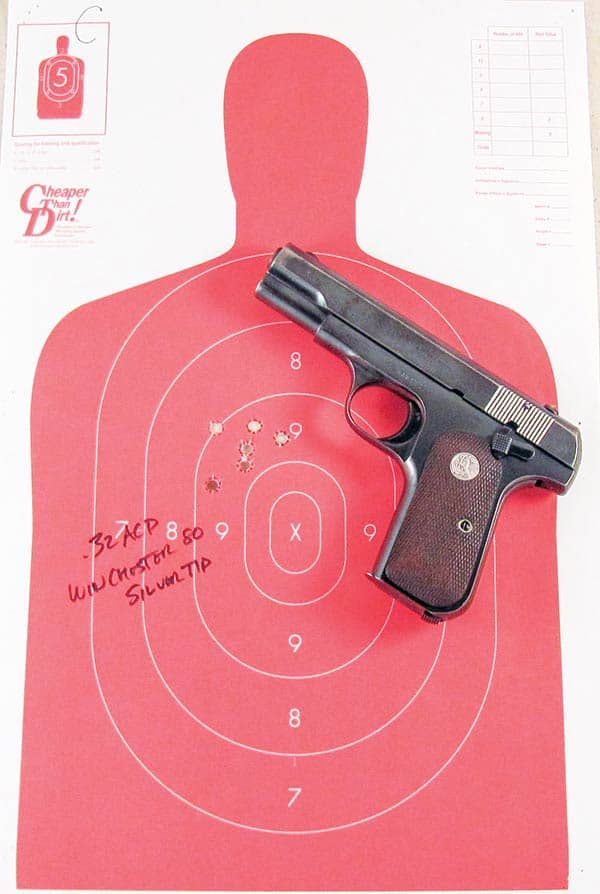Voices From The Past
Part I: The Semi-Auto Pistol
History has been a passion of mine ever since grade school days and I thank the excellent teachers who instilled this love within me. History not only tells us where we’ve been but if we pay attention, it will also tell us where we’re going.
Recently a friend dropped off a large stack of letters to the editor from Outdoor Recreation magazine going all way back to 1906. They were written before the 1911 Government Model, the .44 Special, the .38 Super and the .357 Magnum. In reading them I discovered several things. One is the fact shooters way back before WWI were just as opinionated as we are today!
In this segment we’ll be looking at our ancestors’ thoughts on semi-automatics. As I read these vintage opinions I found myself saying “Yes! So true,” or “You’ve got to be kidding me!”
Here’s an amazing prediction from this collection, especially when we realize it was written before the arrival of the Government Model (let alone all the polymer-frame, striker-fired pistols).
“The automatic is the number of the future, and may be rated in comparison with revolvers as will revolvers with flintlocks.”
By 1905 the .45 ACP cartridge had arrived in Browning’s 1905 Colt, however, I doubt very many shooters had yet seen one and many spoke in glowing terms of the .30 Luger and .32 ACP:
“I carry a Luger carbine-pistol, having a 12″ barrel, day in and day out — day and night — on hunting trips, suspended from my shoulder armpit holster, also a .44 S&W heavy SA, or a Colt of the same caliber. They never tire me. I hunt exclusively with these guns.”
The .30 Luger was especially held in high esteem and it seems significant to me while it had a large following and is mentioned often, no one has anything to say about the 9mm Luger. Due to the dates of these letters, the .44 mentioned would probably be the .44 Russian, or in the case of the Colt, it might have been the .44-40.
“Three years ago I was appointed Under Sheriff of this county. I have since carried pistol and rifle many a thousand miles. First, it depends what a man wants to use a pistol for. I cannot understand why a man would want less than .32-20 smokeless. To my idea of the all-around pistol, there are only three, namely, the .32-20 smokeless on a .45 frame; the .32 Colt Automatic, or the .30 Luger automatic. The Luger has a greatest penetration with soft point bullets. The Colt’s Automatic and .32-20 are about the same. The old black powder .44 or .45 is a back number here, too much load for the weight of the iron. The .32-20 on a .45 frame has no kick and both the automatics put the recoil in your grip, while the old .45 or .44 tries to mark your face and very few men can do accurate shooting with them. But I think anyone with practice could be a good marksman with any one of the other three. Now as to weight: it seems they are not too heavy. Of course, the .32-20 is the heaviest of them all. Last month, when on my annual hunt (I get my game every season), I had wounded a big blacktail, but he was trying to get away, and was almost at the top of a very steep mountain, and every yard he made down that steep hillside meant labor to get him back. I got up close, in order to put him entirely out of business, I shot him with my Luger from behind, square between the horns, using a soft point bullet. It went entirely through.”
“Allow me to say a few words on the merits of the Luger Automatic. In my work as a Ranger in the forest service and my many hunting trips during the past seven years, I have used almost every kind of pistol or revolver and have discarded them all for the Luger. The one I have is the Military Model, .30 caliber, eight shots, 5″ barrel. In range and penetration this gun excelled anything I have ever seen, doubling that of the .45 Frontier Colt and far exceeding any of the .32 Specials. Its accuracy is remarkable, shoots like a rifle, with practically no recoil. In riding on the Pinal Mountains Reserve the past summer, where rattlesnakes were numerous, it was my common practice to shoot their heads off from the saddle with the expansive balls. I have made good targets at 150 yards, the ball seeming to drop very little at that distance. The steel balls will drill a hole through an 8″ seasoned railroad tie at 20 yards. In rapidity of fire it is unsurpassed by any of them. Weighing but 23 oz. is another point in its favor. I use the German make of cartridges exclusively, as others are not satisfactory. The Luger is rather an expensive arm and the cartridges out this way cost $3 per hundred, but both are worth the price.”
“I have noticed the scarcity of boosts for the automatic pistol. I have one of them, a .32 caliber Colt, and like it very much, it is a handy, reliable and very accurate, hard shooting gun. With a soft-nose bullet it will kill almost anything up to a wolf and is fine for squirrels and rabbits. This arm is very simple compared to other automatic guns, and I do not think it liable to get out of order with proper care. I would recommend it to sportsmen wanting a small, light pistol to carry on hunting trips.
“Some outdoor men carry a .32 automatic for shooting pot meat. If you are sufficiently skillful with a handgun to make hits with this model it is as good as any. But I believe there are only a small percentage of shooters who can use the short-barreled autos as nicely as they do a 6″ .32 revolver. I believe the auto would bring disappointment to the majority of us.”
The 1911 Government Model .45 ACP was still five years into the future, however the stage had been set:
“It has been decided to adopt a .45 caliber, the .38 caliber having proven a disappointment upon active service. The bullet that will be experimented with has a weight of 230 grains with a lead core and a full cupro-nickel envelope; the point is round. The type of cartridge in which this bullet is to be used varies accordingly to the weapon for which it is designed. It is estimated that in order to give the requisite stopping power, the bullet must have a velocity of 800 feet per second. This will give us 325 foot-pounds, which is about equal to that of the .44-40 fired from a 5-1/2″ barrel. Several of the leading revolver manufacturers have been asked to send in experimental revolvers and automatic pistols to use this cartridge, and they will be ready by next autumn, when, it is expected, prolonged and exhaustive tests will be held by the U.S. Government in order to decide the official model for the army.”
Today’s semi-automatic pistols rarely ever failed to function with proper ammunition now available, however way back nearly 115 years ago, some semi-automatic shooters were making claims of success only modern ammunition could make possible:
“I also notice in one of the current magazines that someone makes a positive statement that a magazine gun cannot jam. As I have never had any experience with the gun of this sort, I can’t speak on my own relative to it, but it was due to the jamming of the action of the magazine gun a year or so ago that one of the most notorious bandits of the present age was captured. The gun failed him at a critical moment and the result was defeat for him. Will the action of a Single Action Colt jam? No!”
(To be continued)








